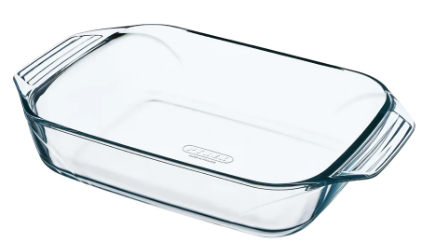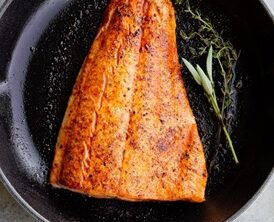Pyrex glass is a type of borosilicate glass known for its exceptional heat resistance and durability. It is a brand name originally owned by Corning Incorporated, an American glass manufacturer, and is widely recognized for its use in various kitchenware, laboratory glassware, and other heat-resistant applications.

Composition of Pyrex Glass: Pyrex glass is primarily composed of silica (SiO2) and boron oxide (B2O3), along with smaller amounts of other oxides like alumina (Al2O3) and soda (sodium oxide, Na2O). The addition of boron oxide to the glass composition gives Pyrex its unique properties.
Properties of Pyrex Glass: The inclusion of boron oxide imparts several key properties to Pyrex glass:
- Heat Resistance: Pyrex glass is highly resistant to thermal shock, meaning it can withstand rapid temperature changes without cracking or shattering. This property makes it suitable for use in ovens, stovetops, microwaves, and other high-temperature applications.
- Durability: Pyrex glass is more robust and less prone to breakage than regular soda-lime glass, making it a popular choice for laboratory glassware, cookware, and other items subjected to rough handling.
- Chemical Inertness: Like other borosilicate glasses, Pyrex is chemically inert and does not react with most substances. This property makes it suitable for laboratory applications, where it is used to store and handle various chemicals and reagents.
- Transparency: Pyrex glass is transparent to visible light, allowing users to observe the contents of containers and cookware easily.
- Low Thermal Expansion: Borosilicate glasses, including Pyrex, have a lower coefficient of thermal expansion than soda-lime glass, making them less susceptible to expansion and contraction due to temperature changes.
Uses of Pyrex Glass: Pyrex glass finds various applications in both household and laboratory settings due to its heat resistance and durability:
- Cookware: Pyrex glass is commonly used in the production of baking dishes, casserole dishes, pie plates, and measuring cups for cooking and baking purposes. Its ability to withstand high temperatures makes it suitable for use in conventional ovens and microwave ovens.
- Laboratory Glassware: Pyrex glass is widely used in laboratory settings for beakers, flasks, test tubes, graduated cylinders, and other glassware required for scientific experiments. Its chemical inertness and heat resistance make it a preferred choice in many research and testing environments.
- Kitchen Utensils: Pyrex glass is used in the manufacturing of mixing bowls, storage containers, and other kitchen utensils.
- Heat-resistant Glassware: Pyrex glass is employed in heat-resistant glassware for coffee makers, teapots, and other hot beverage dispensers.
It is important to note that while Pyrex glass is highly resistant to thermal shock, it is not completely indestructible. Extreme temperature changes, such as placing hot glassware on a cold surface or vice versa, can still cause breakage. Additionally, there are now various brands of borosilicate glass cookware and glassware available on the market, as the original Pyrex brand has faced some changes in its composition and manufacturing processes over the years. As such, it’s essential to check the specifications and recommendations for individual products to ensure their specific heat-resistant properties.


